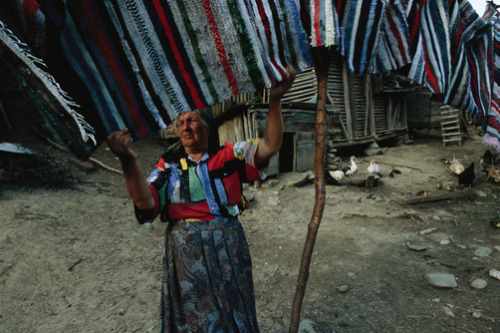songs-of-the-east: The Csangos of Romanian Moldavia. Photographed by Tomasz Tomaszewski for National
songs-of-the-east:The Csangos of Romanian Moldavia. Photographed by Tomasz Tomaszewski for National Geographic.“The Csangos are one of the most enigmatic minorities in Europe. There is no consensus on who were their ancestors, where they came from, when they settled in Moldavia or how many they are today. Even the origin of the word “csango” is controversial. The only undisputed feature about the Csangos is their strong Roman Catholic faith. They live in western Moldavia (Romania), near the eastern slopes of the Carpathians, in villages around the cities of Bacau (southern group) and Roman (northern group), along the rivers Siret, Bistrita, Trotus and Tuzlau, where they preserve traditional European methods of agriculture, body of beliefs, and mythology, as well as the most archaic dialect of the Hungarian language.Their number ranges, depending on the definition, from as many as 260,000 (which corresponds roughly to the Catholic population in the area), even if more than two thirds of them cannot speak the language, to as few as a couple of tens of thousands (based on the fact that in the last official census only less than 3,000 persons declared themselves as Csangos).The Csangos are one of the best examples of the beneficial effects of European cultural diversity. The group has for centuries been living more or less isolated from other areas where Hungarian is spoken, in an area with a Romanian majority. This resulted in the development of a pocket with an individual, most specific culture, interacting with elements of Romanian culture. This is perhaps best illustrated by the folk songs and ballads, which are living and developing even today. They show mainly Hungarian but also Romanian elements. It is well known that many of the European ballads cross the political and ethnic frontiers. One of the last fortresses of this common European ballad-culture is that of the Csangos the study, fostering and conservation of which is therefore a very important task both for Hungary and Romania, as well as for Europe.The lifestyle of this ethnic group still shows in many respects the marks of the middle Ages. Its folklore and ornamental art flourish even today, achieving new products. The same is true for the folk-tradition, the body of beliefs and mythology.This culture is today on the verge of extinction. Out of the maximum figure of 260,000 Csangos only 60,000 – 70,000 speak the Csango dialect. Assistance on the European level is needed to save their culture.For centuries, the self-identity of the Csangos was based on the Roman Catholic religion and the Hungarian language spoken in the family. This, as well as their archaic life-style and world-view, may explain their very strong ties to the Catholic religion. It is not unusual that the Csango, to the question “What nationality are you?” would answer: “I am a Catholic”. In spite of this, there appear to be influences from the surrounding Romanians even in the practice of religion. Thus, for example, the Catholics of Moldavia follow their dead in an open coffin to the grave – an Orthodox tradition.Their religious life has preserved many elements of the middle Ages. Even elements of pagan rites may be discerned, such as traces of the sun-cult. Their body of beliefs is extremely rich, with many archaic features.The ethnic conscience of the Csangos is much weaker than that of other Hungarian-speaking ethnic groups. This may have several causes. It may reflect the weakly developed concept of nation among the settlers of the Middle Ages or the fact that their settlements are geographically dispersed, but an important factor has been the self-conscious, policy of assimilation practised over the centuries by the surrounding society and in particular the Catholic Church.”Source: http://www.assembly.coe.int/nw/xml/XRef/X2H-Xref-ViewHTML.asp?FileID=9301&lang=en -- source link
Tumblr Blog : songs-of-the-east.tumblr.com
#csangos#stateless nations#cultures









